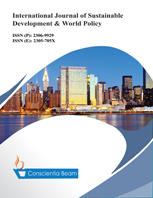Development, Preference Change, and Inequality in an Integrated Walrasian-General-Equilibrium and Neoclassical-Growth Theory
DOI:
https://doi.org/10.18488/journal.26/2015.4.3/26.3.41.55Abstract
This study builds a model to analyze dynamic interdependence between economic growth, structural change, inequality in income and wealth, habit formation and preference change in a heterogeneous-households economy. The analytical framework is based on the Walrasian general equilibrium theory and the neoclassical growth theory. We show that the motion of the economy is described by a set of nonlinear differential equations. Analytically, we focus on transitional processes as well as economic equilibrium. For illustration, we simulate the motion of the economic system with three groups. We identify the existence of a unique stable equilibrium point and carry out comparative dynamic analysis with regard to some parameters. We show how, for instance, habit formation of a group affects the dynamic paths of all the variables of the economic system.

